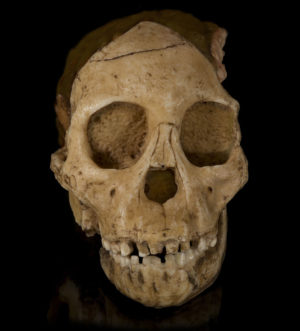
In an unprecedented move, world-renowned palaeoanthropologist Lee Berger of the University of Witwatersrand will, for the first time ever, lead the general public through video access into the university’s backroom “Vault”, where many of Africa’s fossils bearing on human origins are stored and studied. The Vault is normally reserved for exclusive access by scientists and scholars.
The lectures, which will be roughly 30 minutes long, will be featuring some of the University’s most iconic fossils, including the Taung Child, Homo naledi, Australopithecus sediba and various other fossils from the Sterkfontein, Makapansgat and Swartkrans sites.
“We at the university decided to do something special,” says Berger, who is also an Explorer at Large at National Geographic.
“We decided to give people a behind-the-scenes look at our fossil vault, which holds over 50% of the entire record of human origins known on the continent of Africa.”
Starting with the discovery, history and a demonstration of the original Taung Child fossil (see first video below), discovered in 1924 in South Africa, Berger will use these original fossils and associated artifacts to tell the stories of how these fossils were discovered, studied and how they add to our knowledge of our origins as a species.
“We are extremely fortunate at Wits to have such a valuable collection of strategic assets that we can use, to share our knowledge of what makes us human,” says Berger.
“My vision with these videos is that they can be viewed by the general public to give them a glimpse of the world of palaeoanthropology and human origins, as well as to be used as a teaching tool for teachers and lecturers in their classrooms during these difficult times.”
Hosted on a special section of the Wits University website, and released on Youtube, the lectures will start off with more general stories and descriptions of some of the fossils, and progress into the finer details of the study of palaeoanthropology.
“With today’s online media being so engaging, I hope that with these videos we can create a whole new way of studying and sharing some of our exciting discoveries, and, hopefully stimulate engaging discussions related to human origins.”
Interested individuals can follow Lee Berger for more updates and continuing videos on Facebook at Prof Lee R Berger, or on Twitter @LeeRBerger.
_____________________________
_____________________________
Article Source: Adapted and edited from the original news release from the University of Witwatersrand, issued by Schalk Mouton, Senior Communications Officer.
Cover image, top left: Courtesy Didier Descouens, Creative Commons Attribution-Share Alike 3.0 Unported license, Wikimedia Commons
_____________________________
Advertisement





